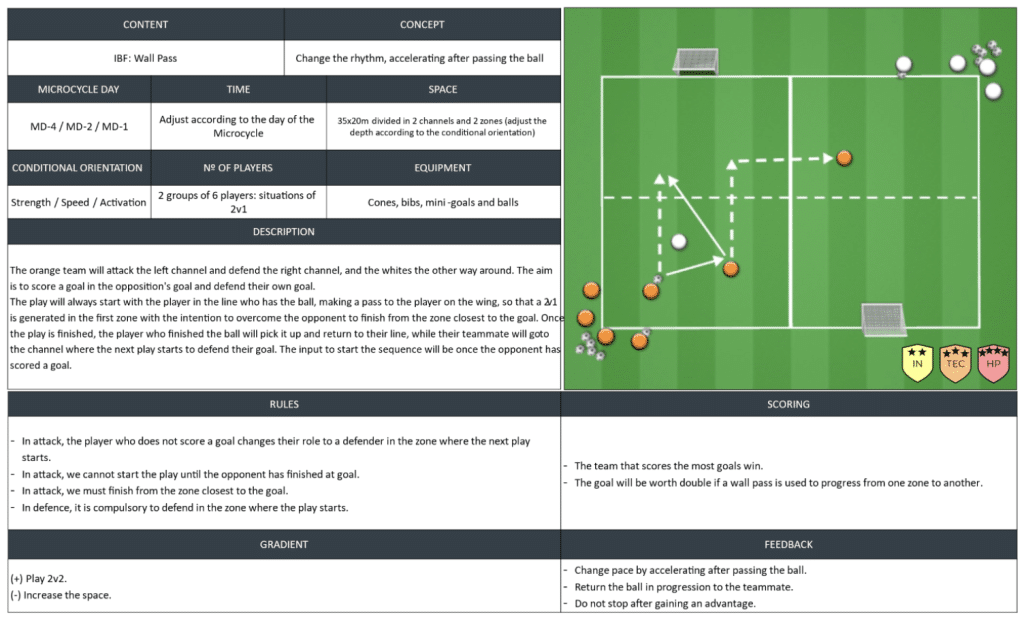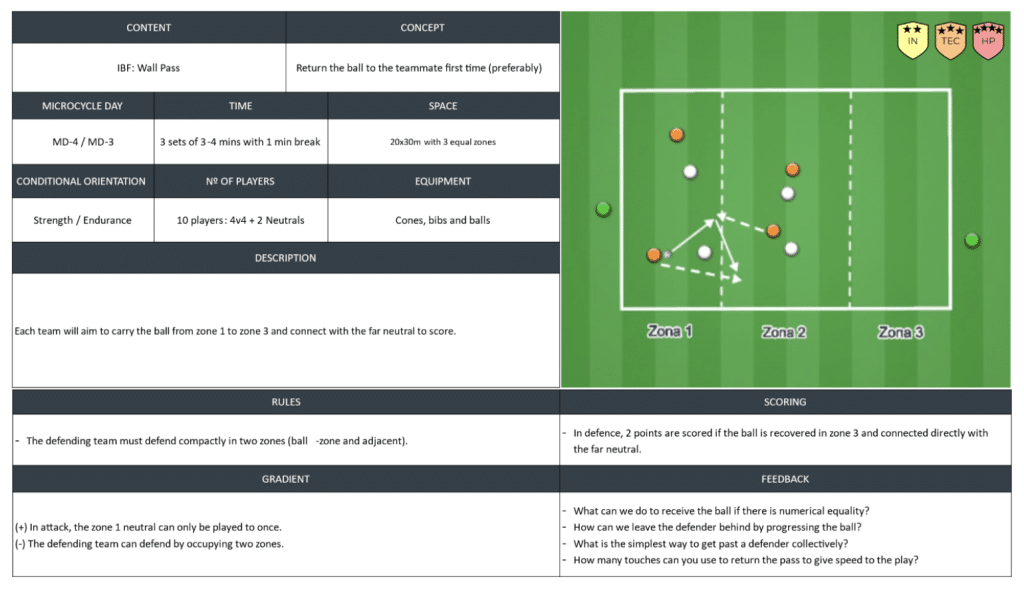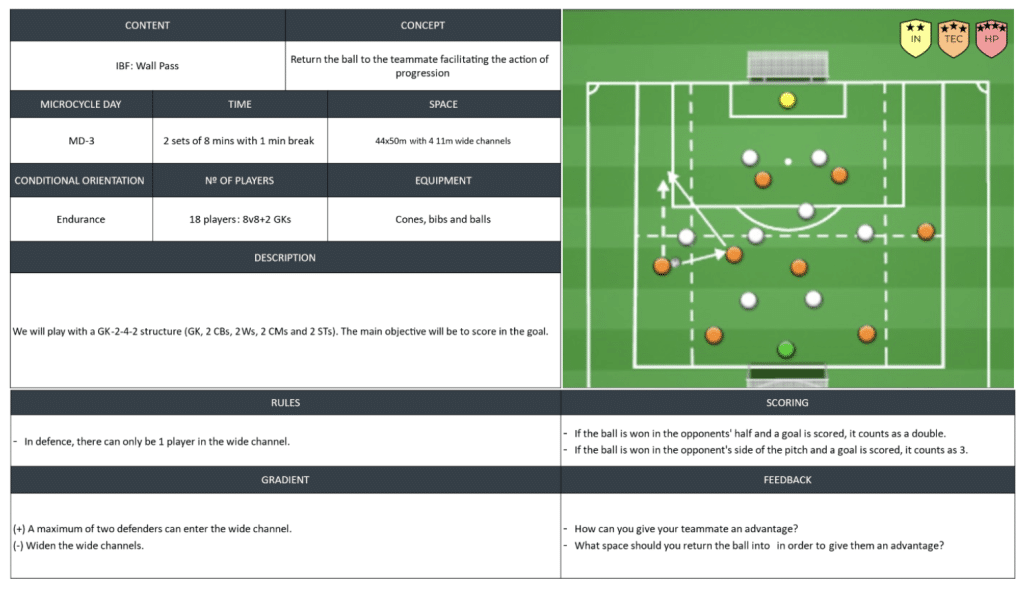The wall pass is a training content that allows the player with the ball to progress in a free collective way by combining passes with another teammate in order to quickly attack a free space.
To do this, it is important to train it as early as the development stages. For this reason, we share with you some examples of tasks that you can use with your team to improve this content, going from less to more complex.
Task 1: Duels
The first task we present is an intermittent format duel, and is applicable in any period, from development to high-performance, being ideal for use in the activation phase of the session of any of the days of the microcycle indicated.
Image 1. Intermittent 2v1 duel to train the wall pass. Source: MBP
In the case of using the task for a team in development period, it would be used for the day of the microcycle where individual or attacking behaviours are to be trained. In addition, it will be very useful to focus on coordination aspects of the action due to the low complexity of the task.
In the case of a team in a technification or performance period, it would be placed in the strength day due to the reduced size of the spaces.
Task 2: Polarised Possession Game
The second task is a polarised possession game, i.e. with directionality of attacking and defending, and is also applicable in any period from development to performance.
Image 2. 4v4+2 Neutrals in a Polarised Possession Game to Train the Wall Pass. Source: MBP
Its location within the session will vary depending on the period. In the development period, it will be more advisable to use it in the main phase of the session, while in the technification and high-performance period, it will be more useful in the activation phase due to the reduced number of players it has.
The aim of the rules is to ensure that players in zone 2 cannot turn and progress individually, but that, under pressure from defenders in the same zone, they look to progress collectively with another teammate, who can take advantage of the space in zone 3 to achieve the objective. To do this, we encourage the defenders to retrieve the ball as high up as possible, so that it is necessary to associate with teammates.
Task 3: Real Conditioned Game
This task consists of a Real Conditioned Game and, like the two previous tasks, is also applicable in any period from development to high-performance.
Image 3. 8v8+2 GKs Real Conditioned Game to Train the Wall Pass. Source: MBP
Unlike the previous two tasks, this one is more complex, involving many more elements of the competition in a more specific space. It is therefore an ideal task to use in the main phase of the session.
In addition, the use of the rules in the wide channels aims to enhance the use of the main content, giving some advantage to the attacker to be able to receive the return pass from a teammate with an advantage. With this, the scoring system also seeks to encourage the attitude of the defending team to press in the opponent’s half and thus open up spaces to progress through the wall pass.
What do you think of the tasks? Do you think they could be useful for your training with your team? Leave us your comments and possible variants that you think could improve them.
Would you like to go deeper into high-performance training?
In the Master in High Performance Football, you will learn in a comprehensive and complete way a training method of tactical preference, which will allow you to deeply understand all the structures of high-performance football.
You will apply the bases of structured training and its relationship with the Individual Fundamentals by Position (IFP), enabling you to discover how to train the team from complex thinking, relating it to the Universal Collective Fundamentals and the Line Group Fundamentals.










